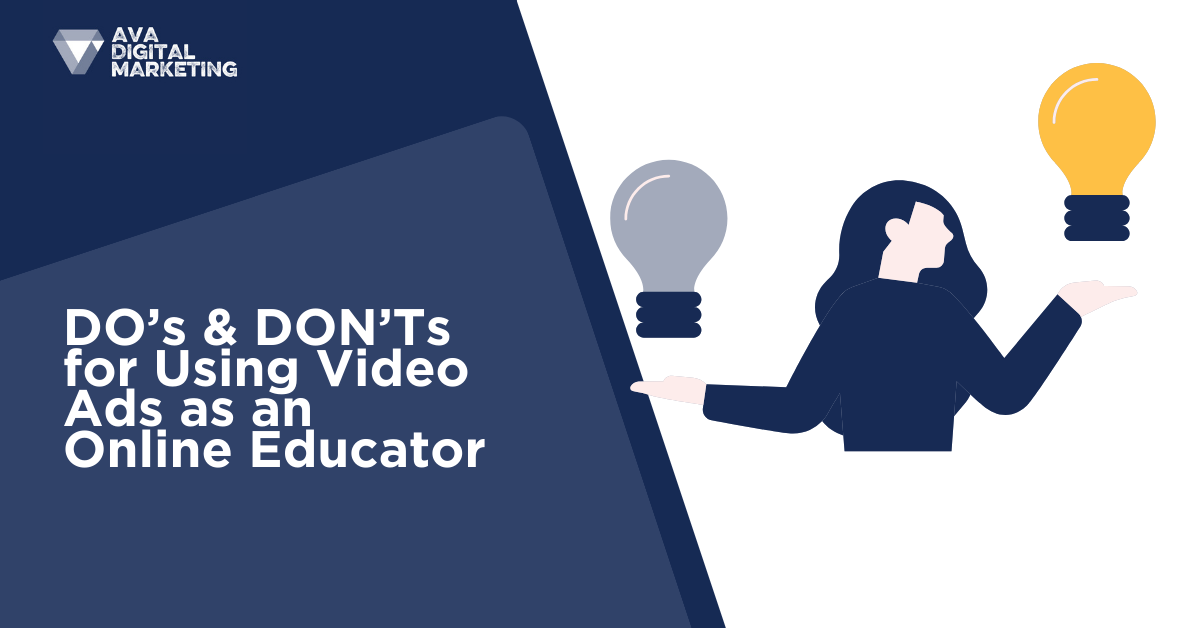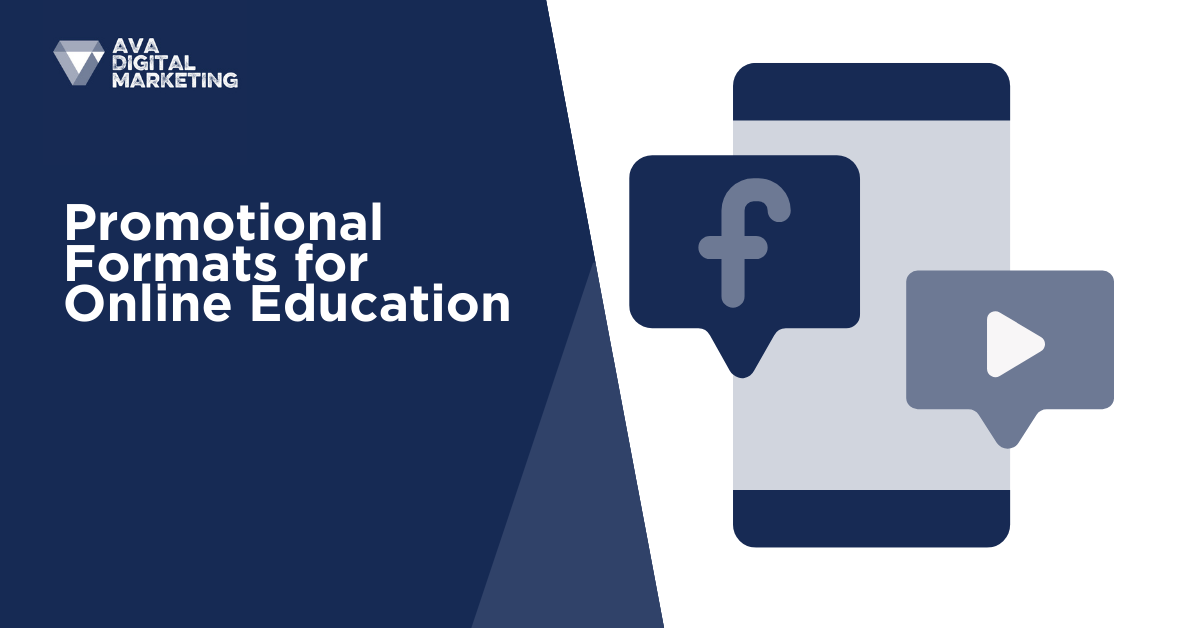Introduction
Online learners and digital natives who constantly scroll through content demand a more engaging and immersive educational experience.
Video has definitely proven to be a driving force in online engagement, but is it right for promoting your brand?
Ask yourself these 3 questions:
- Do my educational programs benefit from visual representation?
If yes, consider video ads.
- Is your target audience video-centric?
If yes, consider video ads.
- Can you convey passion and authority through video?
If yes, consider video ads.
If you’re considering video ads, stay with us on this one.
What about the Conversion Rate?

Quality Metrics
Defining a good conversion rate for video ads in the online education sphere is not a one-size-fits-all equation.
Where should you start with figuring out what conversion rate you should be targeting? Studying the dynamics of your educational content consumption.
Metrics such as click-through rates (CTR) and conversion rates often intermingle, more often than not setting the stage for misinterpretation. While a high CTR is undoubtedly positive, the key lies in whether these clicks materialize into meaningful engagement and eventual conversions.
Consistently scrutinize your lead quality. Clicks alone are insufficient, the true measure lies in conversions that translate to tangible course enrolments.
This leads us to a pivotal aspect — the user journey. Beyond the initial click, analyzing how users interact with the content post-click provides relevant insights.
Tools like Google Analytics illuminate the path users take after engaging with the video ad, allowing for an in-depth understanding of conversion success.
Platform Choice
Facebook and Instagram emerge as powerhouses for online education video ads. With their vast repository of tutorials, quick tips, how-to seekers, the platforms align seamlessly with educational content demand.
However, the platform choice shouldn’t be a unilateral solution. Facebook’s ad targeting, for instance, presents a distinct advantage — a nuanced understanding of platform dynamics, rooted in years of campaign optimization.
Tailor your ad strategy to the strengths of each platform. Additionally, identify peak engagement times and days through analytics to ensure your reach to the audience when receptivity is at its highest.
RECOMMENDED READING 👉ELEVATE YOUR ONLINE COURSE AD DESIGN AND ENGAGEMENT
DO’s & DON’Ts for Using Video Ads as an Online Educator

THE DO’s
Tap into Qualified Traffic
Precision is crucial. Use platforms like Google Ads and Facebook to leverage their robust targeting parameters.
Tailor your ads to demographics, interests, and online behavior relevant to your educational offers. This not only enhances engagement but ensures every ad dollar is invested where it matters most.
Narrowing your focus might seem counterintuitive, but quality always trumps quantity, especially when it comes to generating engagement. A smaller, more engaged audience is far more likely to convert.
Vary Video Lengths and Formats
Acknowledge the diversity of your audience’s content consumption habits.
Short, attention-grabbing videos are perfect for platforms like Instagram, capturing the scrolling attention span. Longer, in-depth content could thrive on Facebook, where users actively seek comprehensive insights.
The beauty of variety lies in its ability to cater to different segments of your audience. Experiment to find the sweet spot that resonates with your unique learners.
Blend Raw and Polished Videos
Authenticity builds trust, but a touch of professionalism instills confidence. So what do you do?
Align the production level with the context. For an introductory ad, a raw, personal touch may be more effective. Conversely, a polished testimonial video can enhance credibility.
Striking the right balance is an ongoing process. Monitor audience reactions and adjust your approach accordingly. Sometimes, the imperfect charm of raw videos connects better with learners seeking a genuine educational experience.
Repurpose Content Strategically
Not every ad will hit the mark initially. Rather than viewing it as a loss, consider it an opportunity for better strategizing.
Repurpose the content for different platforms, tweak the messaging, and experiment with different angles to discover what resonates.
Successful campaigns often arise from the ashes of initial setbacks. Be quick to adapt to the changing dynamics of the online education market.
RECOMMENDED READING 👉BOOSTING ONLINE EDUCATION SALES: AD CAMPAIGNS THAT WORK
THE DON’Ts
Ignoring Video Length
The attention span of your audience varies across platforms. A lengthy ad on a platform like Instagram might be ineffective, while a concise, impactful message thrives.
Tailor your video lengths to the expectations and habits of your audience on each platform.
Every platform has its own rhythm, and adapting to it is crucial.
Respect your audience’s time, and they’ll be more likely to invest it in your educational offerings.
Overlooking Targeting Parameters
Blindly casting a wide net wastes resources and dilutes your message. Invest time in understanding your audience’s online behavior, interests, and demographics.
Utilize the detailed targeting options provided by platforms to hone in on the learners who are genuinely interested in what you offer.
Precision targeting not only improves conversion rates but also reduces ad spend inefficiencies. Every click should be a step closer to enrolment, not just a fleeting view.
Neglecting the Power of Branding
Consistency in branding across all ads fosters trust and loyalty, essential elements for long-term success in the competitive online education landscape.
Educational journeys are personal, and learners want to align with educators that share their values. Consistent branding creates a narrative that resonates beyond the immediate call-to-action.
Underestimating Viewer Disposition
Online learners are primed for educational content, making them more receptive to video ads.
Leverage this disposition by crafting ads that empathize with their pain points, showcase tangible benefits, and provide a glimpse into the transformative power of your courses.
Understanding the content consumption patterns of your audience is a strategic advantage. Educational ads don’t face the same resistance as generic ads. They are welcomed as valuable content in a learner’s journey.
3 TAKEAWAYS
Investing Effort Yields Exponential Returns
The effort you put into crafting engaging video ads directly correlates with the success of your online educational programs.
Beyond immediate conversions, strategic video ads contribute to long-term brand recognition, audience engagement, and a positive ROAS.
Adaptability – A Key Asset
The dynamic nature of the online education landscape demands adaptability.
Successful educators pivot, repurpose, and experiment based on audience feedback and market trends. This flexibility ensures that your ad strategy remains relevant and effective.
Educational Ads – A Unique Advantage
Unlike generic ads, educational video ads benefit from a predisposed positive disposition from viewers.
Leveraging this empirical priming allows for better and quicker reach, as your ads go beyond being just promotional tools by presenting online learners with relevant content for their learning journey.
Video vs. Image Ads

Performance Metrics
While both can be visually appealing, video ads consistently outperform image ads across various parameters.
One pivotal metric is watch time, a critical factor indicating user engagement. Videos naturally command longer viewing durations, providing a more extensive window for educators to communicate their brand message and offerings.
Engagement Dynamics
The dynamics of user engagement heavily favor video ads. The immersive nature of videos captures attention and encourages active involvement, fostering a deeper connection between the viewer and the educational content.
Image ads, on the other hand, may struggle to convey the same level of richness and emotional resonance.
Social Sharing
Video ads thrive on dynamic, shareable content. Harness the power of platforms like Facebook and Instagram, where educational content finds a receptive audience.
User Friendliness
The user-friendly nature of video ads is a significant advantage for online educators. Videos simplify complex concepts, making educational content more accessible.
Image ads may lack the versatility needed to deliver a comprehensive message, potentially limiting their effectiveness in conveying the value of an online course.
Brand Recognition
Videos excel in solidifying brand recognition. The combination of visuals, audio, and narrative elements creates a memorable brand experience.
Image ads may struggle to establish a distinctive brand identity, especially in the saturated online education market.
The speed at which a brand message is communicated is also crucial. Video ads, with their dynamic storytelling capabilities, swiftly communicate the core values of an online course.
This quick transmission is essential in capturing the viewer’s attention and priming them for a subsequent offer.
Engagement to Conversion: Bridging the Gap
Ad Design
Video ads demand a strategic approach that balances engaging visuals with concise messaging.
Educators must ensure that the design resonates with their target audience, sparking curiosity and prompting further exploration.
Compelling Offer
Craft offers that align with the needs and aspirations of your audience. Video ads, with their narrative potential, can articulate the value proposition more comprehensively.
Leveraging the Customer’s Journey
Video ads seamlessly guide viewers through the marketing funnel, leveraging storytelling to create a narrative that resonates at each stage.
Image ads, by contrast, may struggle to provide the same level of continuity in guiding potential students from initial awareness to enrolment.
Mitigating Intrusiveness
While video ads offer numerous advantages, you must be cautious not to let their inherently immersive nature become intrusive.
Balancing engagement with non-intrusiveness involves strategic placement, respecting viewer autonomy, and ensuring that the call-to-action is seamlessly integrated into the educational narrative.
Promotional Formats for Online Education

Course Previews
Use course previews to capture attention and incite curiosity.
Build a narrative arc within the preview itself — a story that unfolds in a way that resonates emotionally with the viewer.
By strategically crafting a narrative that showcases the journey from problem to solution, you can create a compelling emotional hook that lingers, increasing the likelihood of conversion.
Student Success Videos
Video testimonials leverage authenticity as a trust-building mechanism. The key here is to prioritize genuine, unscripted accounts of student success.
Authenticity deeply resonates with potential students by offering a firsthand account of the transformative impact of your program.
Leverage this format aims to build trust, a crucial factor in the decision-making process for online course enrollment.
Mini Case Studies
Mini case studies in video ads are used to infuse campaigns with data-driven persuasion.
Video-driven data presentation enhances the credibility of the course, assuring potential students that the promised outcomes lead to tangible results.
This approach is designed to appeal to the logical reasoning of potential students, providing evidence of the course’s efficacy, addressing any skepticism they may have and clearing the path toward enrollment.
Behind-the-Scenes Content
The point of sharing behind the scenes moments is to showcase the human side of course creation — the passion, dedication, and teamwork.
This transparency aims to build a deeper connection with the audience, establishing the educator as a genuine expert that’s made their own investment in the program and they can witness that themselves.
RECOMMENDED READING 👉ONLINE ADVERTISING ROI: INSIGHTS FOR EDUCATORS
Authenticity over Exaggeration

Why Is It Easier for Exaggeration to Occur in Video Ads?
Emotional Impact
Videos have the power to evoke strong emotions and create a compelling atmosphere. This emotional resonance can sometimes overshadow factual accuracy.
A well-crafted video, accompanied by stirring music and impactful visuals can create a heightened emotional response that may distract viewers from critically evaluating the content.
Selective Storytelling
Video ads are inherently selective in showcasing content. They provide a curated snapshot of reality, emphasizing certain aspects while downplaying others.
This selectivity can be exploited to present a narrative that, while true in isolated instances, may not accurately represent the broader context or typical experiences.
Visual Manipulation
The visual nature of videos allows for creative editing and manipulation. Scenes can be edited to appear more dramatic or impressive than they are in reality.
Subtle visual cues, such as camera angles, lighting, and graphics can be employed to enhance the perceived value or impact of a program.
Audio Influence
The combination of visuals and audio can enhance the persuasive impact of a message.
The tone of voice, music, and sound effects can contribute to a sense of urgency or excitement, further influencing the viewer’s perception.
The audio-visual synergy can be leveraged to make exaggerated claims more convincing.
Ensuring Your Video Ads Align with Ethical Standards
Honesty and Accuracy
Prioritize honesty and accuracy. Represent your courses truthfully, highlighting their strengths without resorting to hyperbole or misleading claims.
Clearly communicate the benefits and outcomes learned can expect, grounded in the actual learning experience.
Real Success Stories
Feature genuine success stories and testimonials from learners who have benefited from your courses. Authentic voices and real-world applications provide tangible evidence of the value you offer.
If possible, incorporate video footage of real virtual learning environments to give viewers a realistic preview of what to expect.
Balanced Emotional Appeal
Strive for a balanced emotional appeal that aligns with the authentic benefits of your educational programs.
Use emotions to complement factual information presented in the video, creating a compelling but grounded narrative.
Provide Context
This could include links to detailed course descriptions, FAQ or a dedicated landing page where viewers can find comprehensive details about your programs.
Encourage potential learners to explore more information before making a decision to show your support for a transparent and informed decision-making process.
Regularly Update Your Content
Review your video content to ensure it remains accurate and reflective of the current state of your courses.
Update videos with new testimonials, success stories or relevant information to keep your content fresh and aligned with your offers.
Conclusion
What got you where you are, won’t get you where you need to be. To meet your new learners you need to diversify and experiment.
Adopt a lesson learned approach.
Do some rigorous testing of various video ad formats, analyze performance metrics and promptly eliminate what does not resonate with your audience.
This iterative process ensures that ad spend is directed purposefully, avoiding unnecessary costs and frustrations.